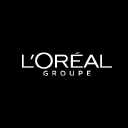Here’s Why We Think L’Oreal’s Market Dominance And Robust Growth Trajectory Might Continue In 2018
- The Rise Of Luxury Beauty
By the first nine months of 2017, L’Oreal’s Luxe Segment had grown by ~11% like-for-like driven by makeup and facial skincare sales. The segment’s double digit growth in Asia Pacific was driven by markets like China and Hong Kong and through the channels of travel retail and e-commerce. Travel retail has been a very important source to drive the sales of luxury cosmetics. Along with the growth in passenger traffic and conversion of the passengers to buyers, this channel will continue to be one of the most important ones for the sales of luxury beauty products. Chinese travelers are the highest spenders both domestically as well as internationally and hence the Chinese are one of the most important groups with which to be boosting travel retail sales.
- The Growth Of Active Cosmetics
In 2017, L’Oreal’s Active Cosmetics Segment grew by 5% like-for-like for the first nine months and the best selling brands have been La Roche-Posay, Vichy, Cera Ve, and Skinceuticals. In fact, in Q3 2017, Cera Ve has demonstrated double digit growth in North America. L’Oreal’s acquisitions are expected to aid it in further growing its active cosmetics business and thus increase its market share in segments such as skincare.
- Is There More Room For Growth In L’Oreal Stock?
- After Underperforming The Markets, Can L’Oreal Stock Rally?
- L’Oreal Stock Poised For Bounce Back After Rough Month?
- After Dismal Performance Last Month, L’Oreal Stock Looks Set To Rebound
- L’Oreal Stock Looks Set For A Rally On The Back Of Strong Earnings Growth
- Forecast Of The Day: L’Oreal Makeup Revenues
L’Oreal’s Aggressive Investments And Innovations Help It In Maintaining Its Leadership Position
- In January 2017, in an effort to further grow its active cosmetics segment, L’Oreal announced its intention to acquire the skincare brands, CeraVe, AcneFree, and Ambi from Valeant Pharmaceuticals for a sum of $1.3 billion.
- The year 2016 was an active one for L’Oreal in terms of acquisitions. In July 2016, the company announced the decision to acquire 1. premium fragrance brand, Atelier Cologne, 2. the France-based spa group Société des Thermes de Saint-Gervais-les-Bains, 3. the US based prestige beauty company, IT Cosmetics (for $1.2 billion), and 4. the license to use the Saint-Gervais Mont-Blanc beauty brand.
- In May 2016, L’Oreal announced a partnership with Founders Factory, a global digital accelerator and incubator based in London. The exclusive partnership enabled the companies to invest in Beauty tech startups across the world along with the opportunity to co-create two new companies every year. In January 2017, L’Oreal and Founders Factory selected five startups to further help them with their growth. The selected companies range from those helping businesses improve social media reach and with online campaigns, to those selling customized skincare and nail art. L’Oreal’s own digital initiatives and innovative product pipeline might receive a boost as a result of these investments.
- Currently, the beauty giant is planning on launching a program in Paris that will involve the collaboration of start-ups in order to produce more products like ‘smart’ hairbrushes and skin patches. The company aims at developing a site in Paris where 10 to 12 startups might work in collaboration with L’Oreal to develop more innovative technology for beauty every year.
- In January 2016, L’Oreal launched a stretchable skin sensor called My UV patch. The product, designed as a wearable, will help educate users about their exposure to ultraviolet rays. The patch had been released under the company’s dermatological skincare brand, La Roche-Posay.
- L’Oreal is currently conducting research towards connecting its makeup products through the Internet of Things. The Internet of Things is the network of objects or “things” which can collect and exchange data with the help of their embedded electronics, software, sensors, and network connectivity. The successful implementation of this technology will allow L’Oreal to give connectivity to its makeup products, such as lipsticks, nail polishes, or mascaras. This, in turn, will help the company to better track its consumers.
Editor’s Note: We care deeply about your inputs, and want to ensure our content is increasingly more useful to you. Please let us know what/why you liked or disliked in this article, and importantly, alternative analyses you want to see. Drop us a line at content@trefis.com
Notes:
